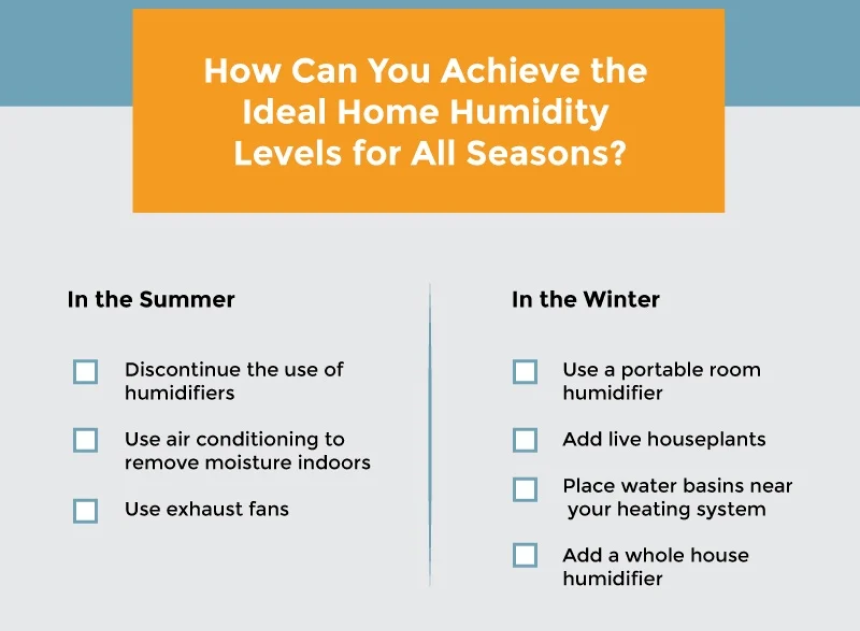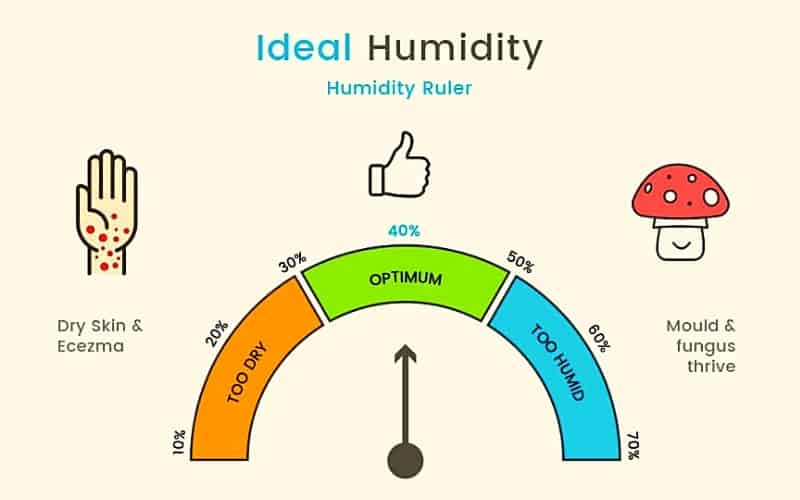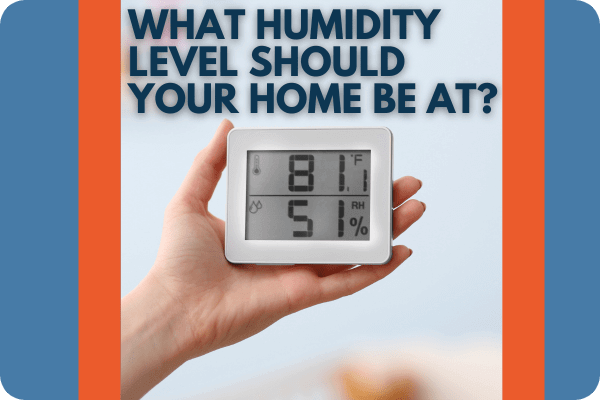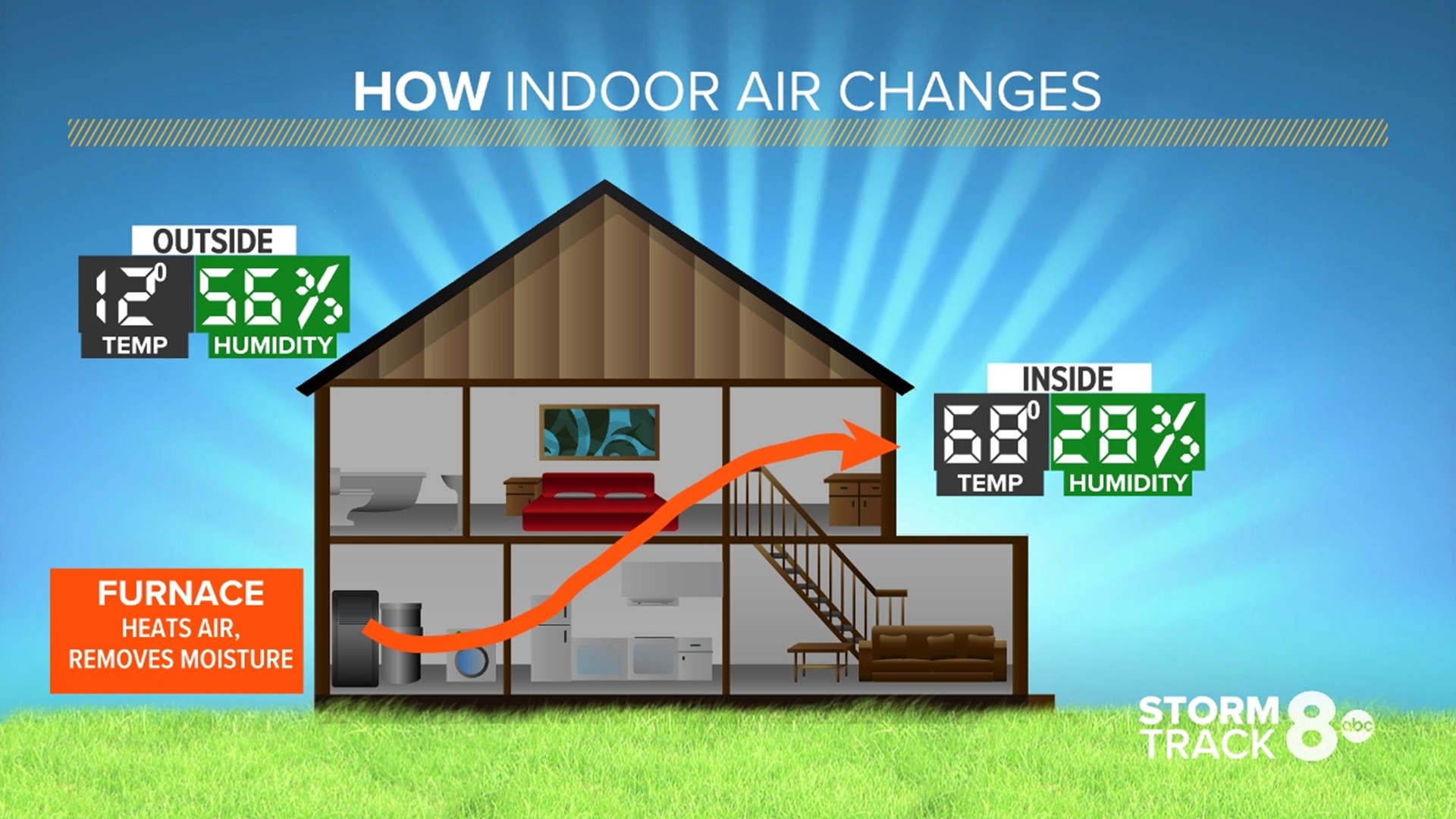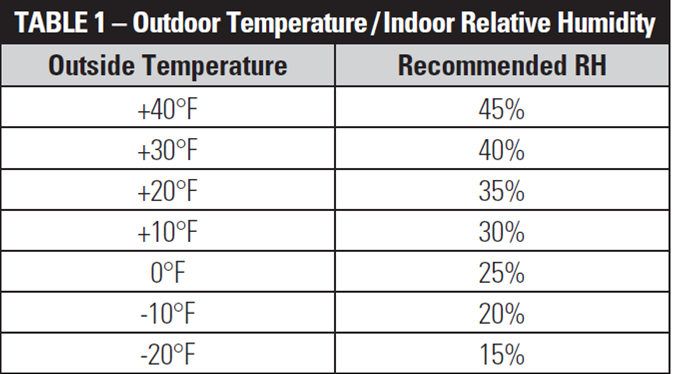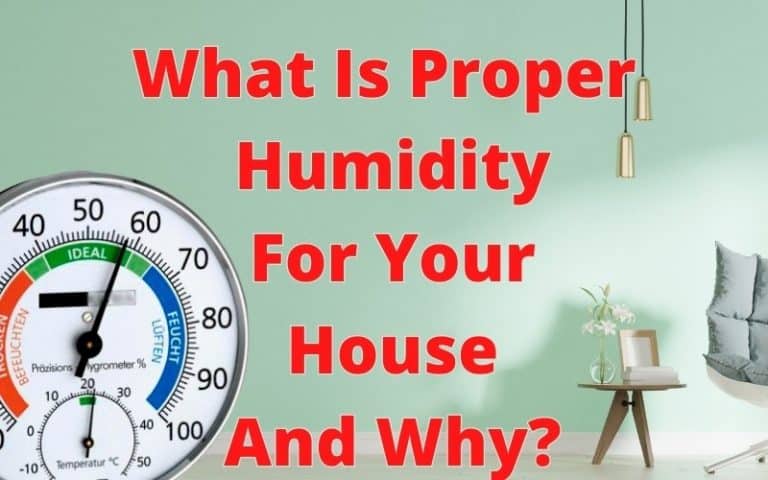What Should Be The Humidity In The House

Maintaining proper humidity levels inside your home or building is crucial for comfort, health, and even the structural integrity of the property. Too much or too little humidity can lead to a range of problems, from mold growth and respiratory issues to cracked wood and static electricity. Understanding the ideal humidity range and how to achieve it is essential for homeowners, HVAC technicians, and facility managers alike.
The Ideal Humidity Range: A Balancing Act
The generally recommended humidity level for indoor spaces is between 30% and 50%. This range offers a sweet spot that minimizes the negative effects of both overly dry and overly humid conditions. During the winter months, especially in colder climates, maintaining a humidity level closer to the lower end of this range (30-40%) is often preferable to prevent condensation on windows and other cold surfaces. In the summer, a level closer to the upper end (40-50%) can be more comfortable, especially when the air conditioning is running.
It's important to note that these are general guidelines, and the ideal humidity level can vary depending on individual preferences, health conditions, and specific environmental factors. For example, people with asthma or allergies may find that a slightly lower humidity level helps to alleviate their symptoms.
The Consequences of Incorrect Humidity Levels
High Humidity: A Breeding Ground for Problems
When humidity levels exceed 50%, you create an environment conducive to mold and mildew growth. These organisms thrive in damp conditions and can cause a variety of health problems, including allergic reactions, respiratory infections, and asthma attacks. Mold can also damage building materials, leading to costly repairs. You might notice a musty odor, visible mold growth on walls or ceilings, or condensation forming on windows and other surfaces. High humidity can also attract pests like dust mites and cockroaches, which also thrive in damp environments.
Examples of problems caused by high humidity:
- Mold growth: Leading to respiratory problems and property damage.
- Wood rot: Causing structural damage to homes and buildings.
- Increased pest activity: Attracting dust mites, cockroaches, and other pests.
- Uncomfortable, sticky feeling: Making the indoor environment feel oppressive.
Low Humidity: A Desert Indoors
On the other hand, when humidity levels drop below 30%, the air becomes excessively dry. This can lead to a range of uncomfortable and even harmful effects, including dry skin, itchy eyes, sore throats, and nosebleeds. Dry air can also exacerbate respiratory problems and increase the risk of catching a cold or flu. Furthermore, low humidity can damage wooden furniture, floors, and musical instruments, causing them to crack or warp.
Examples of problems caused by low humidity:
- Dry skin and itchy eyes: Leading to discomfort and potential skin irritation.
- Sore throats and nosebleeds: Increasing the risk of respiratory infections.
- Damage to wooden furniture and floors: Causing cracking and warping.
- Increased static electricity: Leading to annoying shocks and potential damage to electronics.
Monitoring Humidity Levels: Your Hygrometer is Your Friend
The first step in controlling humidity levels is to monitor them regularly. This can be done using a hygrometer, a device that measures the amount of moisture in the air. Hygrometers are relatively inexpensive and can be purchased at most hardware stores or online retailers. Look for a digital hygrometer for the most accurate readings. Place hygrometers in different areas of your home or building to get a comprehensive understanding of the humidity levels throughout the space. Pay particular attention to areas that are prone to moisture, such as bathrooms, kitchens, and basements.
Controlling Humidity Levels: Solutions for Every Situation
Humidifiers: Adding Moisture to the Air
If the humidity levels in your home are consistently too low, a humidifier can help to add moisture to the air. There are several different types of humidifiers available, each with its own advantages and disadvantages. Central humidifiers are integrated into your HVAC system and can humidify the entire house. These are the most expensive option but also the most convenient and effective. Portable humidifiers are smaller and less expensive, and they can be moved from room to room as needed. However, they require more maintenance and may not be as effective at humidifying large spaces. Evaporative humidifiers use a fan to blow air through a wet wick or filter, while ultrasonic humidifiers use high-frequency sound waves to create a fine mist. Choosing the right type of humidifier will depend on the size of your home, your budget, and your personal preferences.
Cost Comparison:
- Central Humidifiers: $500 - $1500 (plus installation)
- Portable Humidifiers: $30 - $200
Dehumidifiers: Removing Excess Moisture
If the humidity levels in your home are consistently too high, a dehumidifier can help to remove excess moisture from the air. Like humidifiers, there are several different types of dehumidifiers available. Whole-house dehumidifiers are integrated into your HVAC system and can dehumidify the entire house. Portable dehumidifiers are smaller and less expensive, and they can be moved from room to room as needed. Look for a dehumidifier with an Energy Star rating to save on energy costs. The size of the dehumidifier you need will depend on the size of the space you want to dehumidify and the severity of the humidity problem. Consider the grain capacity of a dehumidifier - the higher the grain capacity, the more moisture it can remove per day.
Cost Comparison:
- Whole-House Dehumidifiers: $1000 - $3000 (plus installation)
- Portable Dehumidifiers: $150 - $500
HVAC Systems: A Comprehensive Approach
Your HVAC system plays a crucial role in controlling humidity levels in your home. Air conditioners remove moisture from the air as they cool, helping to lower humidity levels in the summer. However, if your air conditioner is oversized or not properly maintained, it may not be able to effectively dehumidify the air. Additionally, newer HVAC systems often include features like variable-speed blowers and smart thermostats, which can help to optimize humidity control. Some systems also incorporate whole-house dehumidification or humidification as an integrated part of their operation. When choosing a new HVAC system, consider its ability to control humidity levels in addition to its cooling and heating capabilities. Seasonal Energy Efficiency Ratio (SEER) is a key metric to consider. A higher SEER rating means better energy efficiency.
Maintenance Tips for HVAC Systems:
- Regularly change air filters: Dirty air filters can reduce airflow and make it harder for your HVAC system to control humidity levels.
- Schedule annual maintenance: A qualified HVAC technician can inspect and clean your system to ensure that it is operating efficiently.
- Ensure proper drainage: Make sure that the condensate drain line is clear and functioning properly to prevent water from backing up and causing mold growth.
Other Strategies for Humidity Control
In addition to using humidifiers, dehumidifiers, and your HVAC system, there are several other strategies you can employ to control humidity levels in your home:
- Ventilate your home: Opening windows and doors can help to circulate fresh air and reduce humidity levels. However, be mindful of outdoor humidity levels, as this strategy may not be effective on humid days.
- Use exhaust fans: Exhaust fans in bathrooms and kitchens can help to remove moisture generated by showering, cooking, and dishwashing.
- Fix leaks: Repair any leaks in your roof, plumbing, or foundation to prevent water from entering your home and increasing humidity levels.
- Improve insulation: Proper insulation can help to prevent condensation on walls and other surfaces, reducing the risk of mold growth.
- Properly ventilate crawl spaces and attics: These areas are prone to moisture buildup and should be properly ventilated to prevent mold and mildew growth.
Conclusion: A Healthy Home is a Balanced Home
Maintaining proper humidity levels is essential for creating a comfortable, healthy, and structurally sound home or building. By understanding the ideal humidity range, monitoring humidity levels regularly, and implementing appropriate control strategies, homeowners, HVAC technicians, and facility managers can ensure a balanced and healthy indoor environment. Remember to consider individual needs and preferences when setting humidity levels, and consult with a qualified HVAC professional for personalized advice and solutions. Investing in proper humidity control is an investment in the health and well-being of yourself, your family, and your property. Energy Star appliances offer energy-efficient solutions to help manage home humidity levels.


